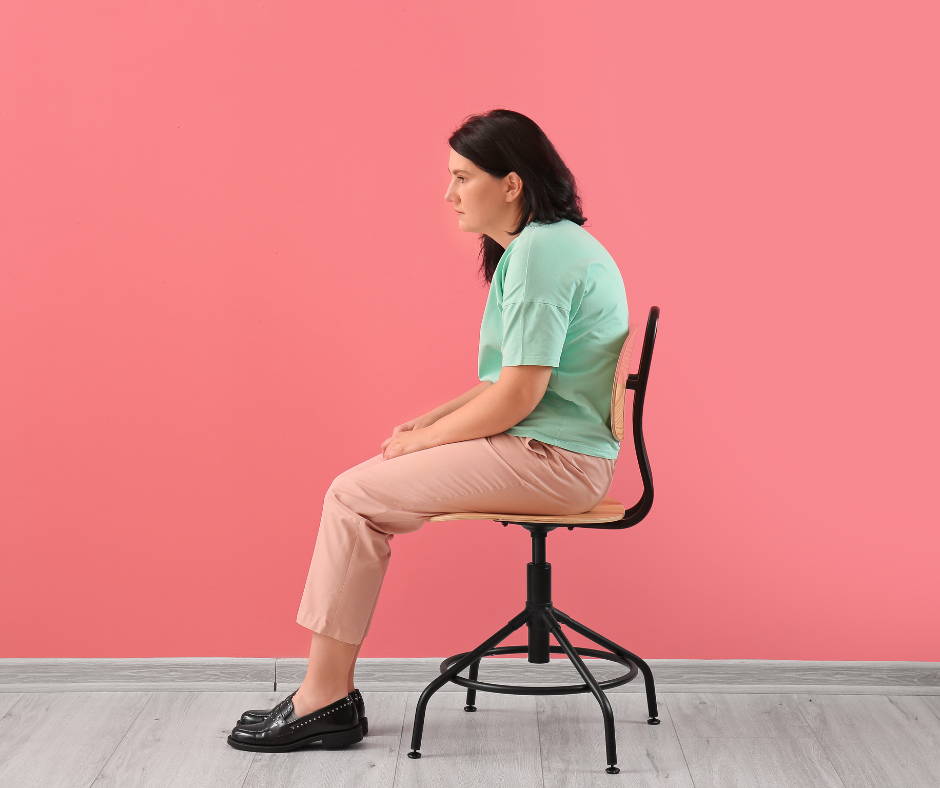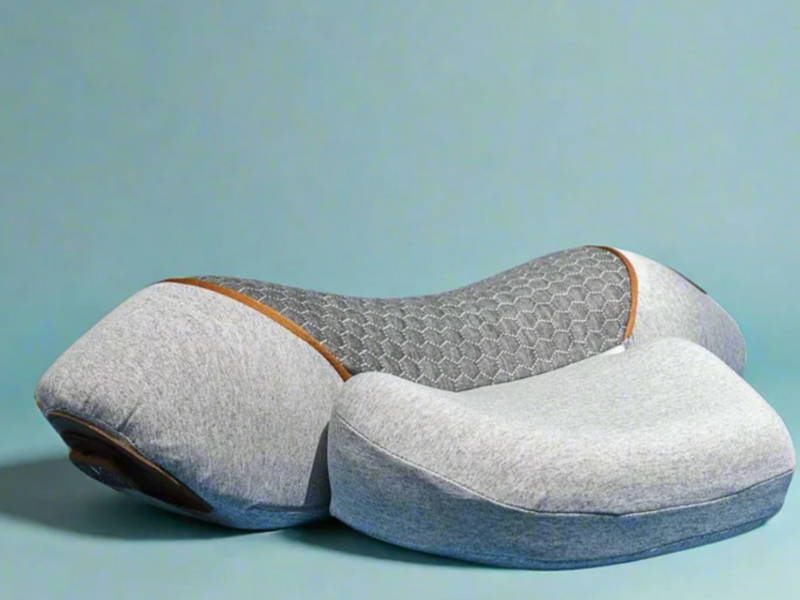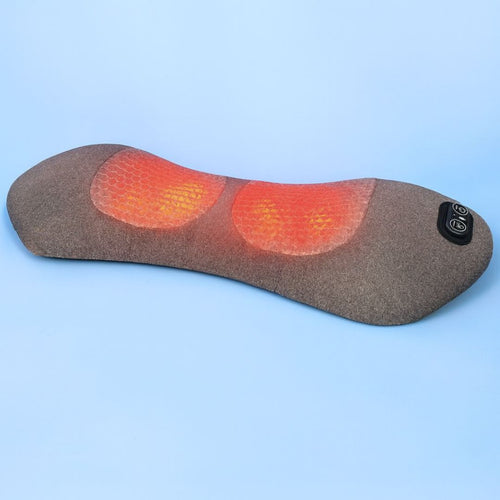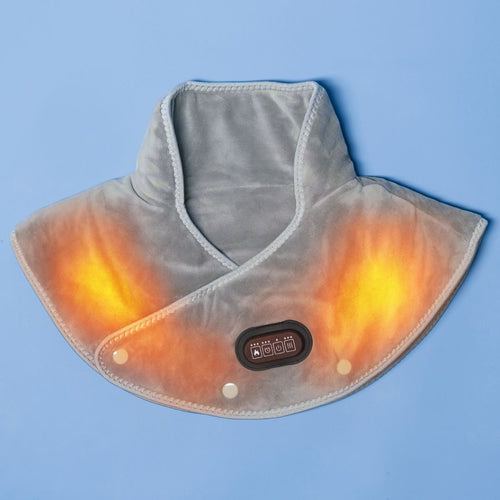The Subtle Ways Poor Posture Can Result in Back Pain Over Time
By Holly Grace Callis | Published on August 4th, 2025

You might not notice it at first. Maybe your shoulders round a little when you sit at your desk, or you slump into the couch at night. It doesn’t feel like a big deal until your lower back starts to ache, or your upper spine feels stiff every morning.
Poor posture builds up over time. What starts as a small habit can slowly turn into back pain that sticks around. In one study from the National Library of Medicine, researchers found that sitting for just a few hours with bad posture made the muscles in the lower back about 16% stiffer. That kind of tension adds up fast if it happens every day.
In this post, we’ll explain how poor posture leads to back pain, what signs to look for, and what you can do to stay pain-free.
Everyday Posture Habits That Could Be Hurting Your Back
Poor posture habits don’t always seem like a big deal in the moment. But over time, they can cause back pain that doesn’t go away easily. These are some of the most common ways people unknowingly put pressure on their backs.
Sitting for Hours Without Lumbar Support
If your chair doesn’t support your lower back, your spine starts to sag. This makes your back muscles work too hard to hold you upright. When you sit like this for hours, the muscles can become tired and sore. A good support behind your lower back helps keep your spine in a healthy curve.
Leaning Forward to Look at Screens
Many people tilt their heads and shoulders forward when using a phone or computer. This forward position adds weight to your upper back and neck. Even a few inches forward can feel like holding a heavy object for your spine. Over time, this can lead to stiffness, tension, and headaches.
Standing With Weight on One Side or Hips Tilted
When you stand with your weight shifted to one side, your spine leans too. This uneven pressure can cause pain in your lower back or hips. It also makes one side of your body tighter and the other weaker. Standing evenly on both feet keeps your spine and muscles balanced.
Slouching While Driving or on the Couch
Sinking into soft chairs or driving with poor posture causes your spine to round forward. This removes support from your back and pulls on your muscles and joints. Even relaxing on the couch can lead to pain if your posture isn’t right. Sitting with back support helps you stay aligned, even while you rest.
Signs Your Back Pain Might Be Posture-Related

Back pain from posture often builds slowly. It’s not sharp or sudden, but it keeps coming back, especially after certain activities. If you notice these signs, poor posture may be the cause.
Pain That’s Worse at the End of the Day
As the day goes on, your muscles get tired from holding your body in poor positions. This makes your back hurt more at night than in the morning.
Relief After Stretching or Walking
If light movement or gentle stretching helps your back feel better, your pain might come from sitting or standing the wrong way. This is a strong sign that posture is the problem.
Upper or Lower Back Stiffness, Especially After Sitting
Staying in one position for too long causes your muscles to tighten. When you get up, your back may feel stiff or sore. This is common with poor desk posture or long car rides.
Frequent Tension Between Shoulder Blades
Slouching or rounding your shoulders pulls on the muscles between your shoulder blades. These muscles often feel tight or achy after sitting at a desk or using a phone for a long time.
5 Ways to Improve Your Posture and Prevent Pain

Fixing your posture doesn’t have to be hard. Small, daily changes can keep your back feeling strong and supported.
1. Use a Lumbar Support Tool While Sitting
Sitting for long hours without back support can cause strain. A lumbar support tool helps keep your spine in the right position. Tools like the Thera Back support your lower back so your muscles don’t have to work as hard. This makes sitting more comfortable, especially if you work at a desk or drive a lot.
2. Take Regular Movement Breaks
Your body isn’t built to stay still all day. Getting up every 30 minutes to walk or stretch helps reduce tension. Even standing up and rolling your shoulders can make a big difference. Changing positions often keeps your spine and muscles healthy.
3. Strengthen Core and Back Muscles
A strong core supports your spine naturally. Simple exercises like bridges, planks, or bird dogs help build strength in your belly and back. When these muscles are strong, they hold your body upright without strain.
4. Align Your Work and Sleep Setups
Your desk and bed should help your posture, not make it worse. Keep your monitor at eye level and your chair at the right height. At night, use a pillow that supports your neck and keeps your spine straight. The Thera Pillow can help with this by supporting the curve of your neck while you sleep.
5. Watch Your Standing and Walking Form
Good posture doesn’t stop when you stand up. Try to keep your shoulders over your hips and your chin level. Don’t lock your knees or lean forward when you walk. Standing tall and moving evenly helps protect your spine all day.
Don’t Wait for Pain to Get Worse
Poor posture doesn’t cause pain overnight. But the longer it goes unchecked, the more likely it is to lead to long-term discomfort. Paying attention to how you sit, stand, and sleep can stop problems before they start.
A few smart changes each day add up over time. If you want to stay pain-free, support your body now.
Ready for some relief? Our durable pain relief products help your spine stay in line and your muscles stay relaxed.
FAQs About Posture and Back Pain
How Can Bad Posture Cause Back Pain?
Bad posture puts stress on the wrong parts of your spine. When your back is out of its natural shape, muscles, joints, and discs have to work harder. This can lead to strain, tightness, and soreness, especially if you stay in one position too long every day.
What Does Poor Posture Result In?
Poor posture can lead to long-term problems like back and neck pain, tight muscles, poor balance, and trouble breathing deeply. It can also make everyday tasks harder because your body gets used to being out of line. Over time, it may even affect how well you sleep or digest food.
Where Do You Feel Pain From Bad Posture?
You might feel it in your lower back, upper back, neck, or shoulders. Many people also notice pain between their shoulder blades or along their spine. Sometimes, poor posture can cause pain to spread into your arms or legs if nerves are affected.
Can Poor Posture Cause Nerve Pain?
Yes, it can. When you slouch or lean forward often, it can press on the nerves around your spine. This may cause numbness, tingling, or sharp pain that travels into your arms, hands, or legs. Keeping your spine in a good position helps protect these nerves.









